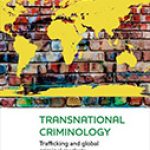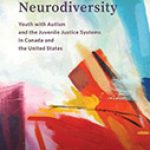The Death of Asylum: Hidden Geographies of the Enforcement Archipelago

Author: Alison Mountz
Publisher: The University of Minnesota Press, 2020. 304 pages.
Reviewer: Veronica Fynn Bruey ǀ June 2022
Do not judge a book by its title — easier said than done. As a survivor of war who was internally displaced multiple times and later sought refuge in a foreign country for nearly a decade, my initial thought of The Death of Asylum: Hidden Geographies of the Enforcement Archipelago was that it invoked fear. Narrowing on the first half of the title, The Death of Asylum, fueled by the recent invasion of Ukraine, I assumed the death of asylum is a complete annihilation of any opportunity for a migrant fleeing for her life to seek legal protection in the Western world, especially in the United States.
Although the book does not dwell on the root meaning and definition of the term asylum, a brief explanation will shed light on topic. The term “asylum” has traversed both linguistic and typological boundaries at the international, regional, and national levels. From its etymological derivatives in ancient Greek, i.e., “a” (without) + “sylon” or “syle” (right to seizure), asylum has now come to mean “refuge”, “sanctuary” or “protection from violence”. In terms of the masses seeking protection, during World War I, lunatic asylum, the precursor of the modern-day psychiatric hospital, catered to 100,000 “shell shocked” military casualties.
Often, the terms “asylum-seeker” and “refugees” are incorrectly and confusingly interchanged. The extermination of six million Jews prompted the creation of the United Nations High Commissioner for Refugees Convention Relating to the Status of Refugees, 1951 and its Protocol in 1967 (hereafter UNHCR Refugee Convention). Interestingly, the word asylum is mentioned only once (in the Preamble) of the UNHCR Refugee Convention, i.e., regarding the grant of asylum possibly placing undue heavy burdens on certain countries. It is at this juncture that the The Death of Asylum will be critically assessed.
The six-chapter, 295-page book begins with a solemn but visceral obituary (p.ix) recounting the tragic loss of the lives of migrants at land and sea borders. According to the International Organisation for Migration, some 23,499 migrants have been missing (or died by drowning) while crossing the deadliest route of the Central Mediterranean by boat from Northern Africa and Turkey in an attempt to seek asylum in Europe. Citing Geneva as the birthplace of asylum, prompted by the atrocious displacement caused by WW I, Alison Mountz emphasises that “the loss of asylum is a loss to be grieved…” (p. ix), especially in terms of the “transformation of the spatial form of the border from line to island…” (p. 57) detentions in Lampedusa and Australian Islands (e.g., Nauru and Christmas Island) (pp. 99-100).
The discourse of The Death of Asylum is squarely focused on the Global North (e.g., Canada, the United States, and EU countries) and Australia and New Zealand, increasingly moving towards securitization of migrant movements and border closure while the Global South persistently bears the unequal burden of hosting migrants. All along the middle of these two extremities are the tragic lived experiences of migrant journeys. For example, the story of Khalil, an 18-year-old Afghan who migrated from Afghanistan to Italy (p.1-2) and a former detainee from Palestine who was interviewed in Sydney, Australia (p.118).
As states erect fences and externalize their borders beyond the confines of physical geographies, a fundamental principle of customary international law — non-interference and state sovereignty — become “dirty words”. The mounting levels of externalisation and securitization to advance offshore enforcement observed across Europe and in Australia originated from the United States’s interception and “…deterrence of Cuban and Haitian migrants and asylum seekers in the Caribbean” pp.30, 39-41).
In the wake of Russia’s defiant invasion of Ukraine, Mountz’s book is a painful reminder that talk is indeed cheap. The Preamble of the United Nations Charter of 1945 affirms that a common goal for sustaining our coexistence as humans is “to practice tolerance and live together in peace with one another as good neighbours, and to unite our strength to maintain international peace and security.” Today, international law is perceived as an apparatus of broken promises where migrants (e.g., refugees and asylum seekers) are likened to “endangered species”, according to Michael Humphrey. Albeit, rather than banking their hopes on empty words, migrants prefer taking the treacherous journey which may result either in their own physical death, or in the death of any chance of seeking asylum.
Dr. Veronica Fynn Bruey Assistant Professor, Legal Studies, Athabasca University


